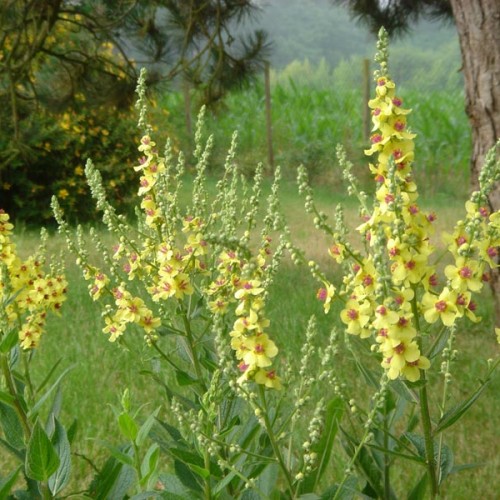
nettle-leaved mullein
Verbascum chaixii 'Sixteen Candles'
Cycle:
Herbaceous Perennial
Watering:
Minimum
Hardiness Zone:
5 - 8
Flowers:
Flowers
Sun:
Full sun
Leaf:
Yes
Growth Rate:
Low
Maintenance:
Low
Drought Tolerant:
Yes
Salt Tolerant:
Yes
watering
Nettle-leaved mullein (Verbascum chaixii 'Sixteen Candles') should be watered when the top inch of soil feels dry to the touch. The amount of water needed will vary depending on the season and the temperature, but the plant should not be allowed to dry out completely. During the summer months, a nettle-leaved mullein will need to be watered at least once a week. In the cooler months, it can be watered every 2 to 3 weeks, depending on the soil and the environmental conditions. If the plant has been grown in a container, it may need to be watered more frequently, as the container can dry out quickly. When watering, it is important to provide the roots with enough water so that it can trickle down through the soil, but not so much that it is standing in water. When in doubt, it is better to err on the side of less rather than more.
sunlight
Nettle-leaved mullein (Verbascum chaixii 'Sixteen Candles') prefers full sun, which means a minimum of 6 hours of direct sunlight per day. However, it can tolerate some shade, especially during the hottest part of the day. Morning sun is the best, with a gradual decrease in the amount of sunlight as the day progresses. The plant benefits from a period of midday shade in hotter climates.
pruning
Nettle-leaved mullein (Verbascum chaixii 'Sixteen Candles') should be pruned at the end of winter, or early in spring. The plant produces many stems, so it is important to thin out the stems to 1 or 2 per plant. This will improve air circulation among the stems, and help prevent any disease. To achieve this, simply use sharp hand pruners to remove the old stems. Prune only the stem, and not the leaves. Additionally, feel free to trim back wayward stems for a better shaped plant. This will help visually define the plant and will give the blooms more of a chance to shine. Finally, cut out any old, dead, diseased or damaged stems.
